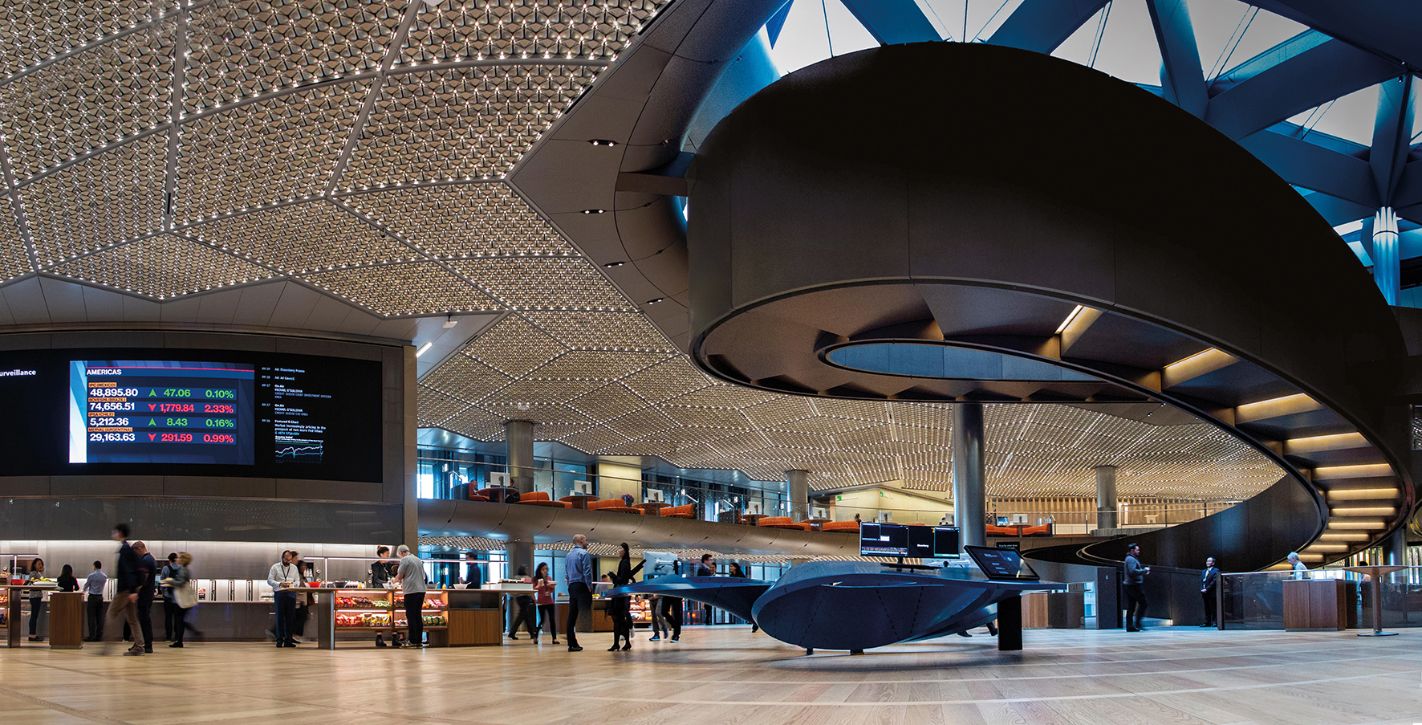Whybrow Studio
Project Name: Bloomberg European HQ, London
Client: Foster + Partners
Sector: Offices and estates
Location: The City, London (UK)
Role: Wayfinding design, signage prototyping and quality benchmarking, implementation management.
The Brief: In December 2010, Bloomberg embarked on the construction of a new European headquarters building, in the heart of the City of London, that would meet the needs of their growing employee population and represent their company’s culture, values and ambitions.
Conceived by founder Mike Bloomberg in collaboration with leading architect Lord Norman Foster of Foster + Partners, the new building – located between the Bank of England and St Paul’s Cathedral – is sympathetic to its surrounding environment. It is also an exemplar of sustainable design, with a BREEAM outstanding rating. Indeed it is the most sustainable major office building in the world.
Occupying a full city block, the 3.2-acre site comprises two blocks united by bridges that span over a pedestrian arcade that reinstates Watling Street, an ancient Roman road that ran through the site.
Whybrow Pedrola were brought in by Foster + Partners in 2015 to work with them and graphic design agency Studio Fernando Gutiérrez. Their brief was to develop a wayfinding scheme for this new, ground-breaking project in the heart of the city.
Outcome: From the founding vision to the delivery detail, Bloomberg’s European HQ is a story of commitment. “A staggering commitment to design quality,” was the verdict of the Architects Journal judging panel, recognising Bloomberg as Client of the Year 2018. The building went on to win the 2018 RIBA Stirling Prize for Foster + Partners.
Selected by Foster + Partners, Whybrow Pedrola was part of the world class Bloomberg team. The architects knew Whybrow Pedrola would understand and respect the design ambitions for the building, but that they would also be up to solving the considerable challenge of making this open, flowing building legible to the 4000 people who would use it.
Bloomberg’s business ethos is about cooperation and collaboration. The whole building plan encourages serendipitous meetings. A detail to support collaboration is what the architect describes as “organic clusters of desks and spaces.” They are clusters of up to 800 work stations. The challenge was how to help people find their desk when they are very often first time or irregular users of the building (arriving from Bloomberg offices world-wide) and they will rarely be met and guided to their destination desk.
Whybrow Pedrola’s solution was inspired by New York, fitting for a company founded in and so much part of the Bloomberg brand. The desk areas can be seen as a sort of city block. The architectural features of the building – the central spiral ramp, materials used in particular
themed spaces, artworks – function as visual markers people orient themselves by, just as you’d use landmarks in New York City.
The grid navigation system delivers detail in a familiar way. Whybrow Pedrola identified a navigational grid marked out by what they think of as avenues – six of them from A through to F. Just like in a city you find your avenue and then follow the sequence of streets until you get to your destination. Because it’s a familiar navigation convention, signage can be kept to a minimum. The grid is depicted on prominent screens as people exit the lifts. It’s a simple to get idea that’s presented in a clear and timely way to the first time visitor creating a mental map. Whybrow Pedrola worked with graphic designers Studio Fernando Gutierréz to deliver ‘visually quiet’ signs that are beautiful and effective and fit the design integrity of the project.
Whybrow Pedrola’s contribution to the building has been described as: “A master-class in reductive signage…clean and elegant.” They are very proud to have been part of the team that delivered this wonderful building.
Case Study Submitted By: Whybrow Pedrola Limited, +44 (0)207 703 1428/info@whybrowpedrola.com.
